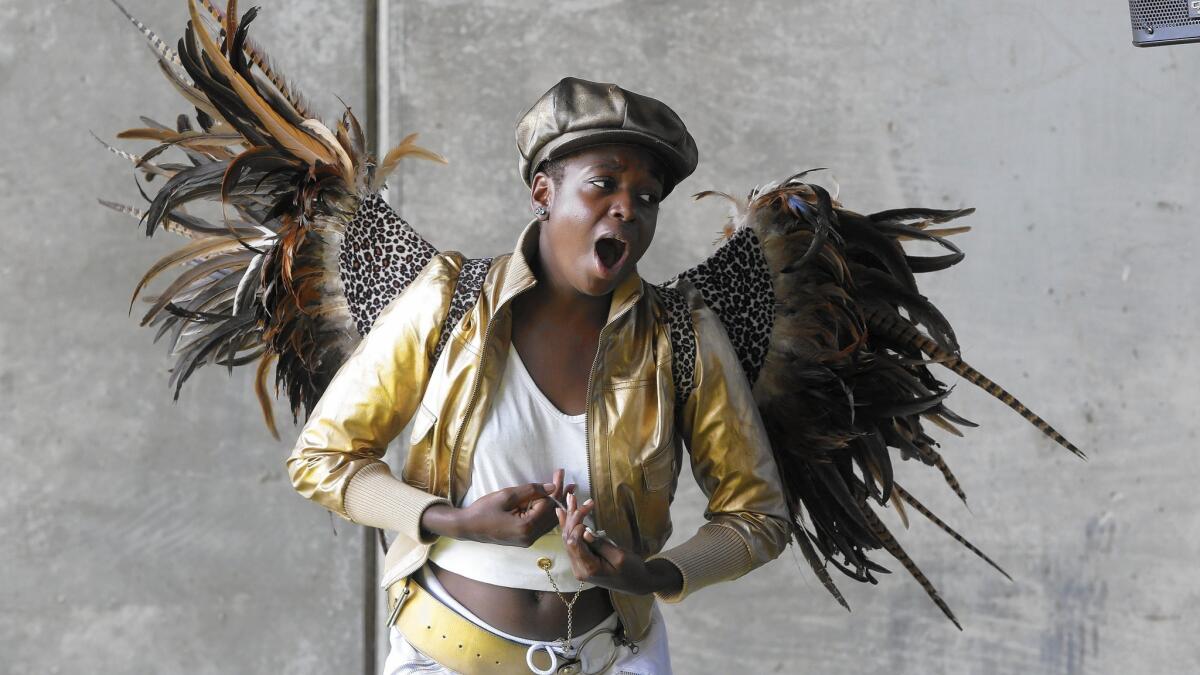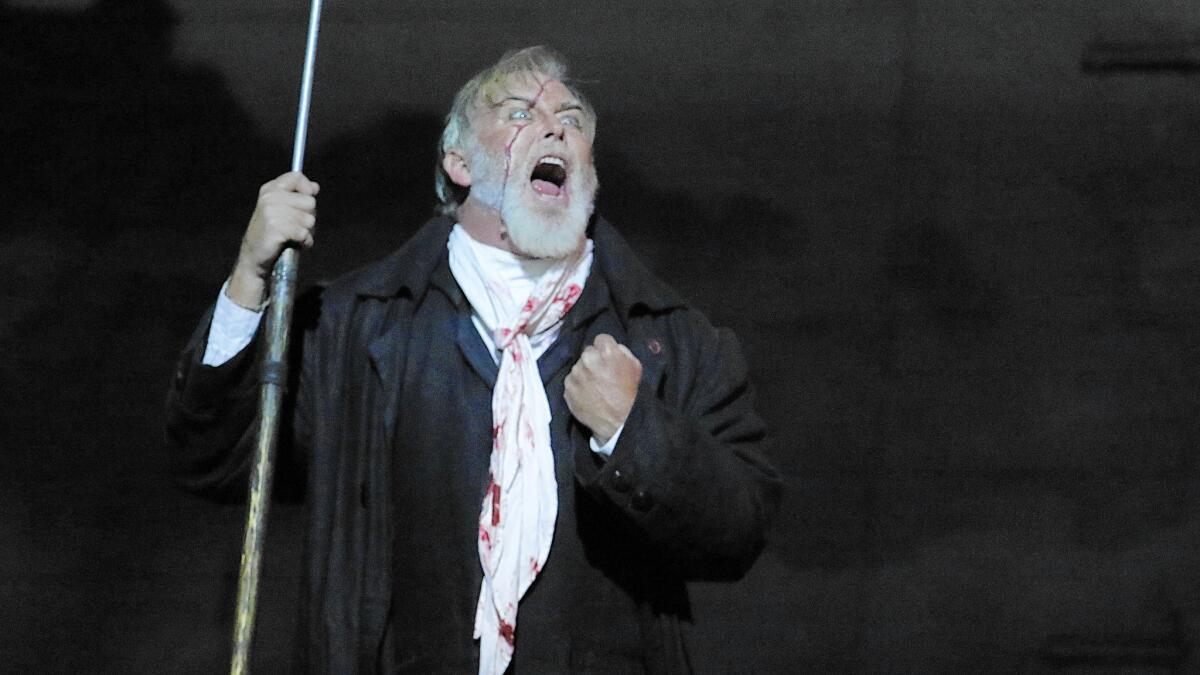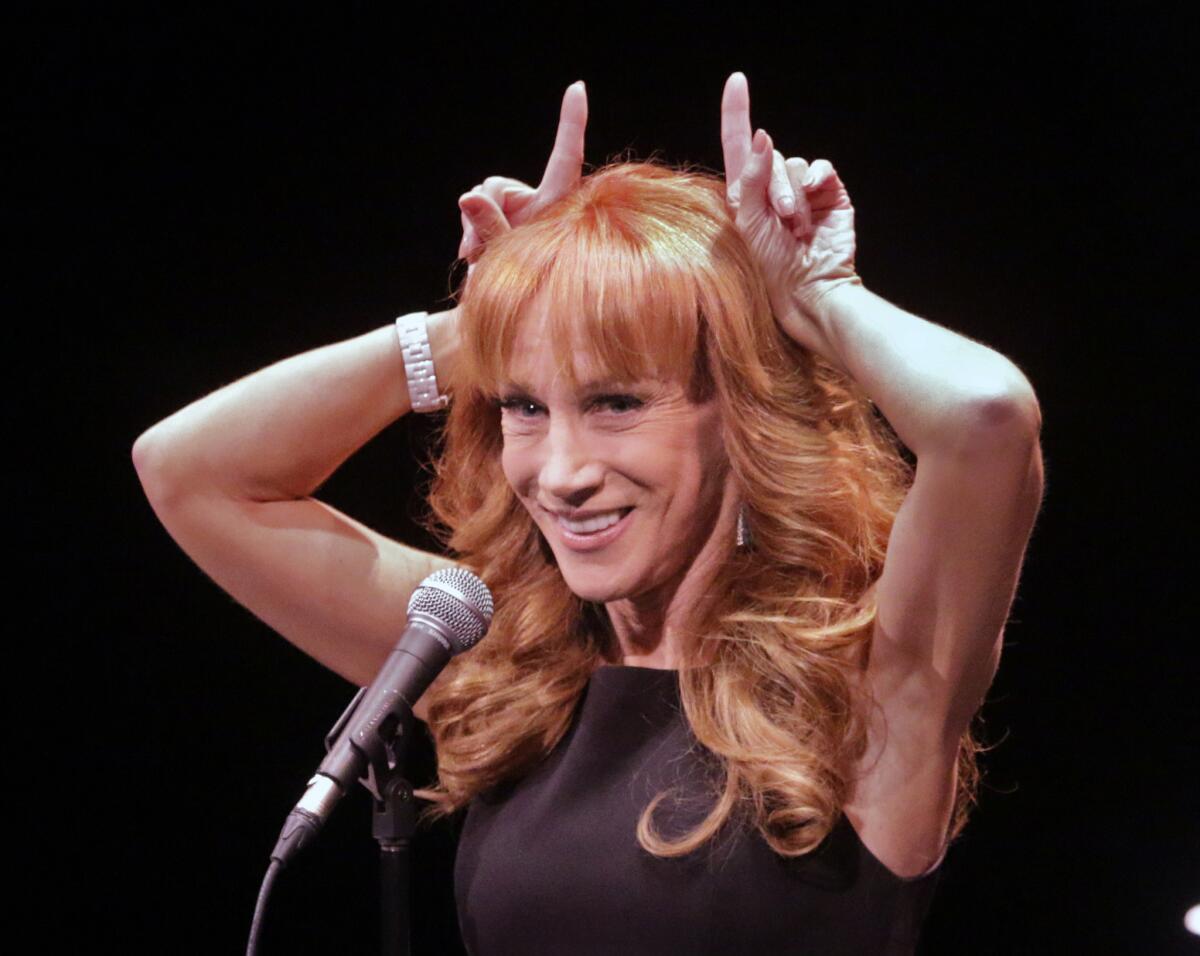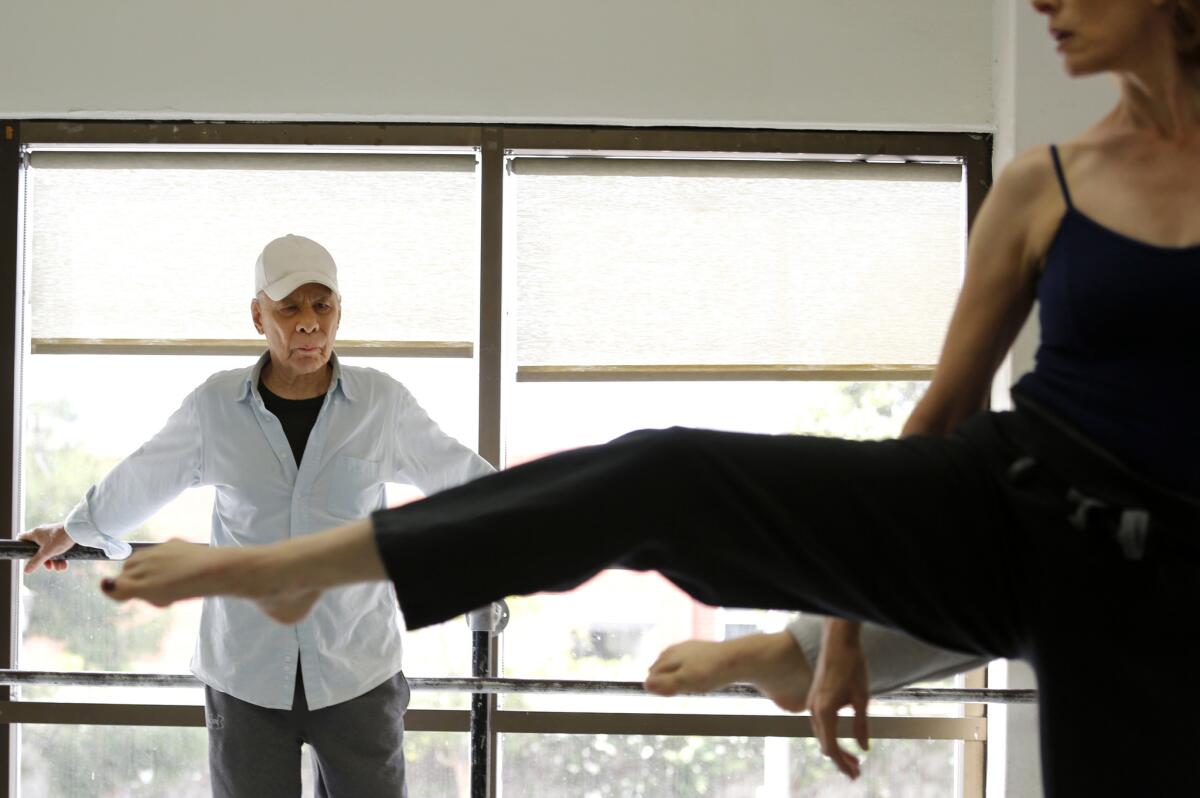Newsletter: Essential Arts & Culture: An outdoor opera, an indoor storm and ‘Moby-Dick’
- Share via
I’m Kelly Scott, the arts and culture editor of the Los Angeles Times. A computer controlled artificial deluge, back-seat opera, simulated whale hunting — it's been an unconventional stretch for the arts scene. It’s a good thing you have the Times arts critics and writers to tell you about it.
Car culture
For music critic Mark Swed, that meant hours in limos to experience “Hopscotch: A Mobile Opera for 24 Cars,” the Industry’s followup to its celebrated "Invisible Cities" at Union Station in 2013. The Industry’s maestro Yuval Sharon had the complicated idea of dramatizing Julio Cortazar's novel "Hopscotch" with multiple composers and librettists, three different casts on three different routes through L.A. neighborhoods. Sometimes the limos stop for a scene; sometimes the opera goes on inside the car. Mark put a dent in "Hopscotch's" it's-never-been-done-before narrative, but he had praise for the work’s ambition and several indelible moments. The busy staging “causes music, without which there is no opera, to struggle for prominence. But when it achieves it, the sense of triumph is particularly powerful,” Swed writes. The Industry announced last week that it is extending "Hopscotch" through Nov. 22.

Quayla Bramble as Angel sings during "Hopscotch Opera," the mobile opera driving around town in Los Angeles. (Anne Cusack / Los Angeles Times)
A whale's tale
A more traditional opera is being presented on the stage at Dorothy Chandler Pavilion, where Los Angeles Opera is presenting Jake Heggie’s adaptation of Melville's “Moby-Dick.” Swed acknowledged Heggie's popularity — and busy schedule. ”A composer of likably unchallenging opera tackled what many of us consider the most enduringly challenging and substantial work of American literature,” Swed wrote. Unfortunately, he went on, “Rather than try to bring something new to Melville, Heggie, [librettist Gene] Scheer and [director Leonard] Foglia are more interested in illustrating it, bringing it to literal life, or at least as literal as opera can be.”

Jay Hunter Morris as Capt. Ahab in a dress rehearsal of Los Angeles Opera's "Moby-Dick" at the Dorothy Chandler Pavilion. (Lawrence K. Ho / Los Angeles Times)
Neither wet nor wild
Over at LACMA, people are flocking to see the immersive installation “Rain Room.” Art critic Christopher Knight didn’t see it quite the way someone like, say, Michael Govan did. “Let’s stipulate at the outset that 'Rain Room' will be a popular hit. Brainless amusement often is,” Knight writes. Perfect for selfies and smartphone video, it’s already launched a thousand Instagrams and hashtags. “But looking at glamorous pictures is far more appealing than actually being inside, which turns out to be rather banal," Knight continues.

Random International's Tom Stacey, left, Hannes Koch and Dev Joshi stand inside the newly assembled "Rain Room." (Marcus Yam / Los Angeles Times)
Unfortunate timing or self-inflicted wound?
A year ago, the Smithsonian Institution’s Museum of African Art in Washington, D.C., opened an exhibition that would bring it worldwide attention, but not the gratifying kind. Work from the museum’s collection were shown alongside, or "in dialogue with," a private collector’s African American art. Those collectors were Bill Cosby and his wife Camille. Cosby, of course, has spent the last year hearing an ever-increasing number of women claim he drugged and raped them. Was the Smithsonian the victim of excruciatingly bad timing? Hardly, Christopher Knight writes. “The museum had only itself to blame. The Cosby collection show is a vanity exhibition. Surely the museum would deny it, but surfing celebrity taste is the exhibition’s bland motif. Consequently, as Cosby goes, so goes the national museum.”

A visitor pauses while looking at the "Conversations: African and African American Artworks in Dialogue" exhibit at the Smithsonian Museum of African Art in Washington, D.C. (Chip Somodevilla / Getty Images)
Does Anderson Cooper come up for the encore?
Kathy Griffin onstage at the Mark Taper Forum? It was a different performance than the ones Charles McNulty usually sees there. But it was a delicious one. From Donald Trump to the Duggar family to Caitlyn Jenner to the "legit cray" Liza Minelli, the evening was essentially all trigger warnings. “She's the hyperactive host of a slumber party in which no one sleeps or gets a word in edgewise.” McNulty said.
Kathy Griffin at the Mark Taper Forum in Los Angeles.
Kathy Griffin at the Mark Taper Forum in Los Angeles. (Lawrence K. Ho / Los Angeles Times)
A grateful dance community says thanks to Rudy Perez
Deb Vankin spent time with 85-year-old choreographer Rudy Perez, a man who changed dance in Los Angeles when he arrived from the New York avant-garde scene in 1978. He's still making dance, and he's still finding the seeds for his dances in the everyday. Walking by a construction site in Hollywood, Perez paused, listened and said "It's like a performance piece." Perez was to receive an award for a lifetime of experimental dance from UC Irvine Saturday night.
"When I put things together, unconsciously, it comes from my lifetime experience up to that moment," Rudy Perez says. (Michael Robinson Chavez / Los Angeles Times)
In short
David Bohnett, longtime L.A. Phil board member and former chair, takes the seat at the head of the table for the Wallis Annenberg Center for the Performing Arts in Beverly Hills ... Dance comes to cable drama in "Flesh and Bone," a new series about the New York ballet world on Starz. TV critic Mary McNamara was not impressed ... The Autry in Griffith Park pares down its name: no longer the National Center of the American West, it is the Autry Museum of the American West (partly for Google search purposes) ... Steven Lee Morris, former LA Weekly drama critic and more recently the founding editor of Stage Raw, is named to head the L.A. Stage Alliance.
What we’re reading ...
Former L.A. Times art reporter Suzanne Muchnic has written "LACMA So Far: Portrait of Museum in the Making," an indispensable book charting the century-long evolution of the Los Angeles County Museum of Art — “one of America's best known and least understood museums,” as she aptly puts it. –Art Critic Christopher Knight
... and listening to
Our musical institutions pay shamefully little attention to Henry Cowell, the father of California music — inventor of the tone cluster, pioneer of world music, first to bang his fist on the piano keyboard or pluck its strings with his fingers. But leave it to the BBC: Radio 3 recently made Cowell its composer of the week and offers five illuminating, surprising and entertaining daily one-hour programs.
Follow me on Twitter at @kscottLATarts.
The biggest entertainment stories
Get our big stories about Hollywood, film, television, music, arts, culture and more right in your inbox as soon as they publish.
You may occasionally receive promotional content from the Los Angeles Times.








